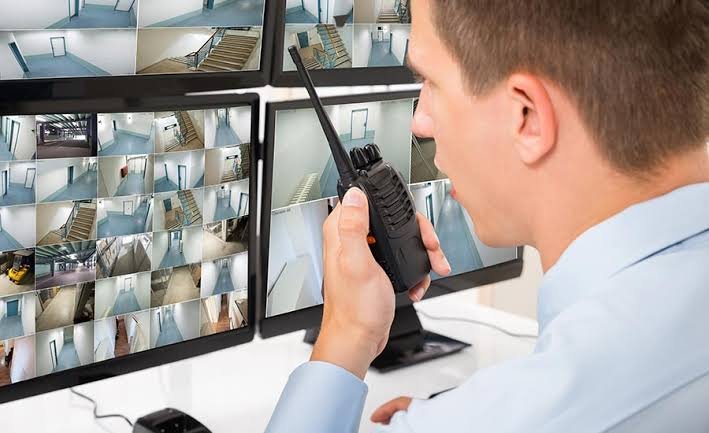Key Takeaways:
- Modern security systems are vital in today’s workplace to ensure employees’ safety and protect assets.
- Integrating technology with traditional security practices enhances overall effectiveness.
- Practical strategies can seamlessly implement these systems in diverse workplaces.
Table of Contents:
- Introduction to Modern Security Systems
- The Need for Enhanced Workplace Security
- Key Components of Modern Security Systems
- Benefits of Integrating Innovative Security Measures
- Challenges in Implementation and How to Overcome Them
- Future Trends in Workplace Security
- Conclusion: Building a Safer Workspace
Introduction to Modern Security Systems
In today’s rapidly changing world, personal and property protection is more crucial than ever, particularly in work environments where safety and security are paramount. Integrating modern security systems, such as those available through resources like https://www.cta-inc.com/business-security-systems/, has revolutionized industries’ approach to safety. These advanced systems embody a sophisticated blend of traditional safety measures with cutting-edge digital technology, providing a robust framework for comprehensive security management.
Businesses face various threats, including physical intrusions and cybersecurity breaches, necessitating advanced security measures. Integrating these systems can address immediate security concerns and prepare for future risks, ensuring workplace safety and a resilient environment adaptable to evolving security challenges.
The Need for Enhanced Workplace Security
Rising workplace-related incident statistics underscore the urgency of improved workplace security. According to the Bureau of Labor Statistics, these incidents have markedly increased over recent years. This alarming trend highlights the need for more sophisticated and adequate security measures that protect human capital and costly infrastructure.
As work environments evolve, so do methods for exploiting vulnerabilities. Organizations must adopt existing security technologies and remain vigilant in upgrading their infrastructure. Enhanced workplace security measures prevent loss and contribute to a productive environment where employees feel safe and valued.
Key Components of Modern Security Systems
Surveillance technologies are essential components of modern security systems, providing unparalleled monitoring capabilities and evidence in case of incidents. CCTV cameras and IP camera systems offer monitoring capabilities, while access control features, such as biometric scanners and encrypted card access, restrict unauthorized access. These technologies reduce breaches, secure critical data, and prevent costly disruptions. Customized systems can meet an organization’s specific operational needs and security policies, providing flexibility and increased protection. Real-time alarms and alerts enhance security measures by alerting security teams and personnel immediately when unauthorized activities are detected. These systems not only minimize potential damage but also act as a deterrent to potential offenders. Automated alerts communicate through multiple channels, such as emails, texts, and app notifications, ensuring timely and effective responses to security breaches or anomalies.
Benefits of Integrating Innovative Security Measures
The advantages of embracing innovative security measures are manifold, extending well beyond the immediate peace of mind they offer. These systems provide a robust deterrent against unauthorized access, thus preventing potential losses and safeguarding valuable assets. By providing vital information and enabling a quicker and better-informed reaction in an emergency, they also significantly increase the efficacy of emergency management protocols, reducing damage and guaranteeing company continuity.
Furthermore, integrating these measures fosters a culture of safety and trust within an organization, promoting long-term employee well-being and retention. Workers who work in safe surroundings are more likely to be effective and support the company’s objectives.
Challenges in Implementation and How to Overcome Them
Despite the clear benefits, implementing modern security technologies is not without challenges. Financial constraints are often a major hurdle, as the initial cost of these sophisticated systems can be significant. Internal opposition to change and incompatibilities with current systems can also hamper successful integration.
To overcome these obstacles, companies must strategically plan their implementation process. This involves prioritizing necessary components based on immediate needs and budget constraints and seeking solutions that offer flexibility and scalability. Educating and training employees on the use and importance of new systems can also help mitigate resistance and ensure smooth integration. Finally, phased implementation allows for gradual adaptation, minimizing disruption while maximizing resource allocation effectively.
Future Trends in Workplace Security
The landscape of workplace security is set to transform further as new trends emerge, driven primarily by technological advances. Artificial intelligence (AI) is poised to revolutionize security systems by enabling predictive analytics to foresee and prevent security threats before they materialize. This futuristic approach allows for preemptive action, effectively reducing the risk of incidents.
Moreover, the Internet of Things (IoT) devices increasingly integrate into security frameworks, offering intelligent monitoring and seamless data exchange between devices. This interconnected approach promises more comprehensive surveillance, allowing places of work to evolve from secured environments to intelligent, adaptive ecosystems that are responsive to the dynamic nature of threats.
Conclusion: Building a Safer Workspace
In conclusion, integrating modern security systems is not simply about protecting physical assets—it’s about creating an environment of trust and safety that empowers organizations to thrive. By overcoming challenges and embracing advanced technologies, businesses can ensure their employees’ and assets’ safety and security, aligning with the best practices in corporate responsibility and duty of care.
Through careful planning and adoption, businesses manage risks effectively and set a foundation for a safer, more productive work environment. This holistic approach to security will undoubtedly form the backbone of resilient and successful organizations of the future.

